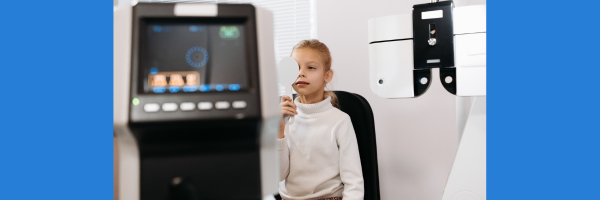What is a Pterygium?
A pterygium is a fleshy growth of blood vessels on the front surface of the eyeball.
As you can see from the photo, a pterygium grows on the surface of the eye, the conjunctiva, typically from the nasal side of the eye towards the cornea (clear window at the front of the eye). A pterygium often develops in the 20s and 30s and will often remain small but occasionally, they can progress much further and continue growing in the later decades of life. In its mildest form, a pterygium is a minor cosmetic nuisance; more serious cases can cause poor cosmesis and become sight-threatening.
What causes a pterygium?
A pterygium is caused by chronic exposure to the sun and is a form of UV damage. It can be exacerbated by dry, windy and dusty conditions. For this reason, pterygia are common in farmers, those that have grown up out west, and in surfers, particularly when adequate sun protection has not been worn. When minor, a pterygium will often make the eye appear a bit red or bloodshot in the corner, and give rise to symptoms of dryness, scratchiness, burning and stinging. In these cases, the frequent use of lubricating eyedrops may provide symptomatic relief and help settle the redness. In more severe cases, the eye can flare up periodically and even become permanently red as the pterygium grows in size. In this situation steroid eyedrops are sometimes required to settle the inflammation.
I already have a pterygium, what should I be concerned about?
The greatest danger over the long term is caused when a pterygium grows far enough that it permanently distorts or alters the smooth curvature of the cornea. When this happens vision can become blurry due to increasing astigmatism (focusing error) and hence glasses will be prescribed to give better vision. As the pterygium grows even further in size it is possible that not even glasses can provide good vision, as the cornea has become too irregular to provide clear optics. For this reason the size of the pterygium should be monitored carefully by your Optometrist and surgery to remove the pterygium should be considered before permanent vision loss occurs.
Modern surgical techniques to remove a pterygium are considered safe and can provide excellent cosmetic outcomes. Your Optometrist can help explore this option more fully and make a timely referral to a suitable Ophthalmologist if required.
What can I do to protect my eyes from developing a pterygium?
The best way to protect your eyes from developing a pterygium in the first place is by always wearing a broad-brimmed hat and wrap-around sunglasses whenever outdoors, year-round. It is important to avoid wearing sunglasses that only provide minimal side protection as it is sun exposure approaching from the side of your eyes rather than from directly in front that most increases the risks of pterygium growth. For this reason sunglasses that provide maximum wrap around the face with wide sides are best. If a person cannot visibly see your eyes from the side of the sunglasses you know they are providing better protection against pterygium development.
For even better UV protection ask your Optometrist about back surface UV protective coatings - these can reduce harmful UV light being reflected off the back surface of your sunglasses onto your eyes and eyelid skin, and can lower the risk of developing skin cancers around these delicate areas. Skin cancers here are more common than you think! By adding a back surface UV protective coating to your sunglasses you have added peace of mind knowing you are providing your eyes the best possible UV protection.
If you are concerned about a pterygium or UV damage on your eyes talk to us today to make sure your eyes are protected.
Stephen Lucas
Optometrist



